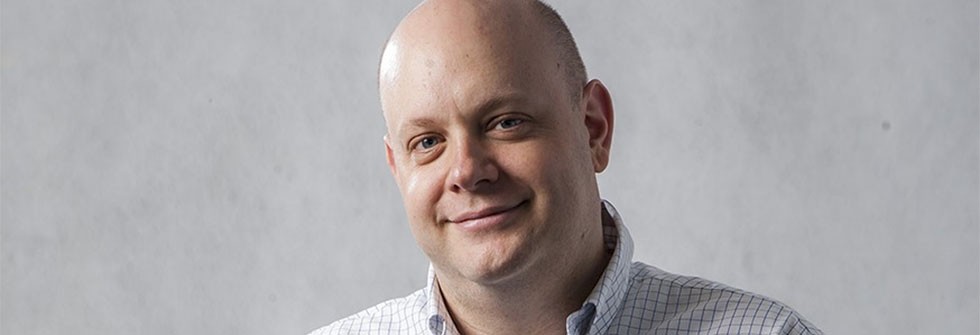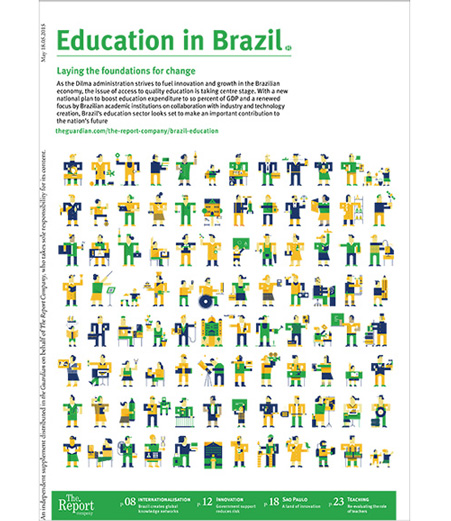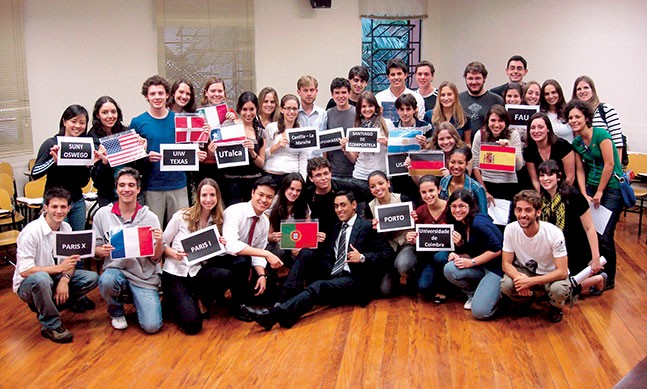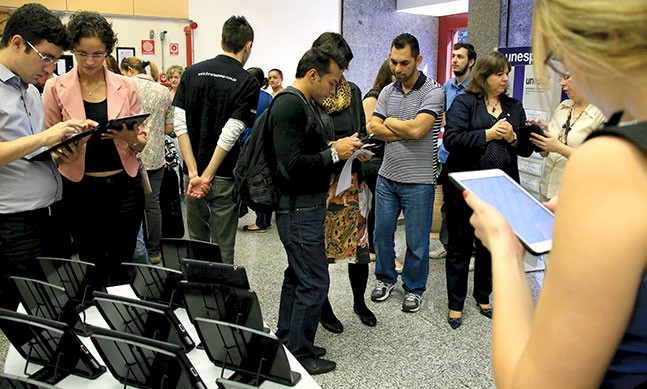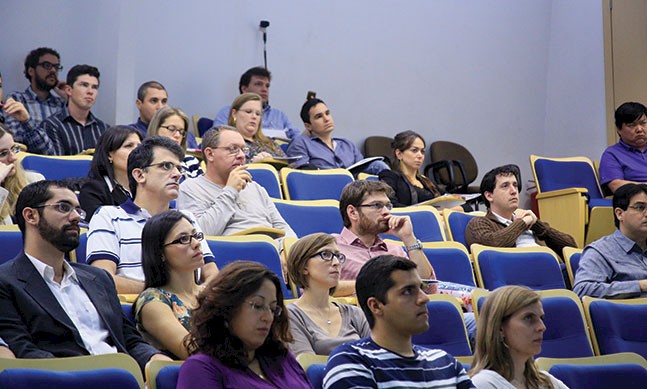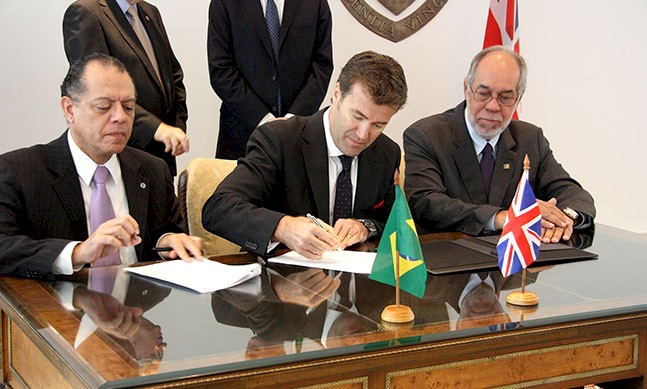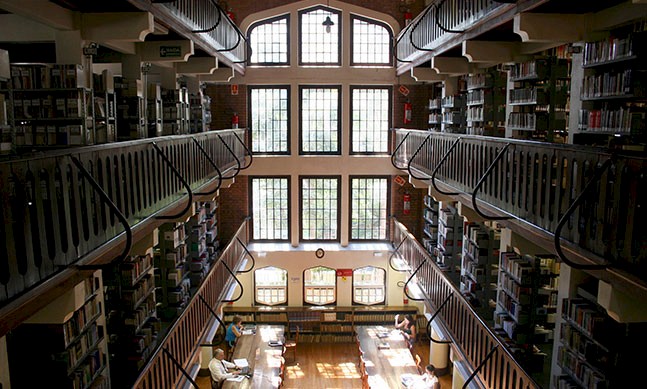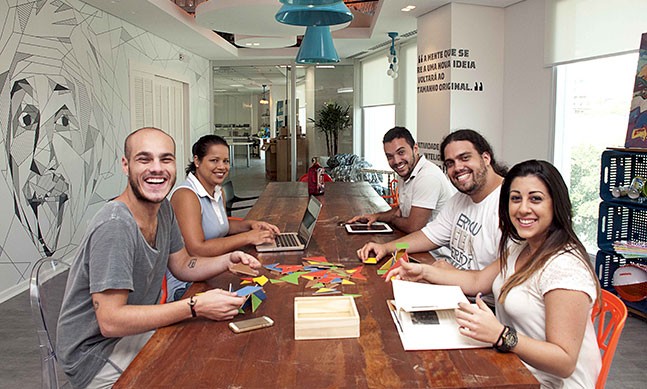With a background in human rights and public safety, Denis Mizne was invited to head up the Lemann Foundation in 2011. Created in 2002 by Brazilian entrepreneur Jorge Paulo Lemann, the institute began with small goals in the field of education and teacher training, and has since expanded its vision to the wider pursuit of nationwide reform in the sector. Mizne explained to The Report Company how educational technology is vital in Brazil’s effort to make giant leaps in a school system currently struggling to inspire its 57 million students.
The Report Company: The Brazilian government has addressed the issue of quantity in education, but now the problem is one of quality. How do you see the current situation?
Denis Mizne: There is only one way of measuring education in a country at the stage of development Brazil is at: whether boys and girls are learning or not. The fact is that, in Brazil, they are not.
In the late 1990s, we universalised access to schools, which is the greatest challenge of poor countries. Now, think of the kids that were born in the year 2000. They entered school in 2006 and will finish high school in 2017. Of this generation, in fifth grade, around one third of 11 year-old students will achieve an adequate level in maths. At age 14, this number drops to 12 percent. That means that 88 percent will not have adequate ability in maths. The number drops to 10 percent at the end of high school. However, the total number of students also falls, because almost half of all students will have dropped out before finishing high school. This means that, in the generation that turned 18 in 2014, only 5 percent fully understand maths. How can Brazil leap forward like this? I highlight maths, but for Portuguese the numbers are only marginally better.
We have just been through an electoral campaign last year. Dilma said that education is going well because there are more people in university; we have the Pronatec courses and so on. Aecio said education in his home state of Minas Gerais is the best in the country. They are both telling the truth; Minas Gerais has the best numbers in the country, but even there only 20 percent of kids are where they should be.
There hasn’t been sufficient improvement. Grades have improved in basic education, but not in middle school, and have been getting worse in high school. Dropout rates have not improved in the last 10 years. Functional illiteracy has not dropped in the last 10 years. The momentum of things alone should have caused it to drop because children have been spending more hours in school and the illiterate people from the older generation have died. It should have improved naturally, but it hasn't.
TRC: There are those that believe that changes will take at least a generation, but does Brazil have the luxury of waiting?
DM: When I started working in education, what most scared me was that the children cannot wait. Change is urgent. We treat the education problem as something to be addressed in 20 years, but errors accumulate and it gets increasingly difficult to teach things to children at the wrong age.
It took a long time to universalise the education system. USP is the oldest university in Brazil, and it is only 60 years old. Brazil started late. On top of this, we did not focus on what we should have, thinking that kids simply being in school was enough for them to learn. Building schools was highly visible, just as building daycare centres is now. During the elections, politicians can always say how many thousands of daycare centres they built, but improving the quality of teachers is invisible, and much more complex.
Brazil is a continent-sized country. We have 56 million students and two million teachers in 200,000 schools. It is very hard to change that all of a sudden and there is a lot to do. We need a unified curriculum so that students, teachers and parents know what is expected of them each year. It is very hard to get anywhere if you don’t know where you’re going.
Secondly, we have to train our teachers to be better, to be able to manage a classroom, and to ensure that students will learn. In Brazil, we provide teachers with four years of training which is very long, vastly theoretical and no practice. We haven't yet taught our teachers to teach, and we need to help them.
Thirdly, schools provide four and a half hours of teaching per day. Studies have shown that in some cases only 60 percent of that is productive teaching time, so there is a lot of waste. Teachers also miss a lot of classes and the average in Sao Paulo is 30 missed school days a year. We could accomplish so much more with full-time schools, but a start would be to better utilise the time we do have.
“By the end of 2015 we expect 10 million Brazilians to be using high-quality technology in their day-to-day education.”Tweet This
TRC: The government’s goals were laid out in the National Education Plan. Does this plan need private sector help to be realised fully?
DM: There are several levels to the private sector. Firstly, there’s ours: private social investment. I think our role is to help Brazil transition from the old to a more modern system of education, which we cannot achieve merely with incremental improvements; we have to change the paradigm.
Since we are late in our development, we have the advantage of being less attached to our systems. We are currently ranked 57th in the Programme for International Student Assessment (PISA), and we won’t get to number 10 with small improvements. Everyone is improving. We need to make a leap, and the private sector, specifically its technology, can provide the ideas to make that happen.
Here at the Foundation we have a startup programme for educational technology companies. We bring products from outside the country to ensure that we get the latest technology. However, we also look at the implication of public policies, and we try to take our evaluations to the government. For instance, if we do not solve the problem of connectivity in schools, it will be very hard to make the leap. Telecommunications companies could solve that problem.
TRC: Do you think there is a grey area, however, between the public and private sectors when it comes to education and the possibility of conflicts of interest?
DM: I think institutions cross the line when they begin acting on behalf of their private interests, not the public good. Schools are interesting to them because that’s where the kids are, and whether a product is sold or not, there is a target audience of 56 million children. We need to change the approach so we can help establish strategic priorities, but it is the government that ultimately has to set them. Even the richest foundations only scratch the surface of the public budget for education, which was R$70 billion in 2015. We must respect the legitimacy of the government, but we cannot simply be implementers of its policies.
TRC: One of your goals is to identify and develop innovation in education, but the education sector - especially public universities - appears very resistant to new ideas. How do you plan to introduce innovation to the sector?
DM: We are focusing on basic education. By the end of 2015 we expect 10 million Brazilians to be using high-quality technology in their day-to-day education. We are looking at ideas that have worked elsewhere, such as the Khan Academy platform for maths. We did a pilot project in 2012 with 200 students and by 2012 had 70,000 in 44 cities using it. Now we have 2.7 million studying maths this way. We have 600,000 studying code via Programaê!, our partnership with Telefônica Vivo Foundation.
With the Khan Academy platform, students study alone and teachers observe the development of each student. However, in the training we provide them, the best things happen outside of technology, because teachers can see who is doing well and who isn’t. The next day, the teacher will have them sit together, one teaching the other. The one who teaches, learns best. This way, they are not just learning alone, through the computer, but from someone who is more like them.
We support Brazilian startups that have good ideas, like Geekie, and we have developed an app for the literacy training of small children. I believe we need good products, but it is crucial that teachers receive the proper training to use it. We developed a hybrid education program with the Christensen Institute and Peninsula Institute to train teachers in using technology. All these cities were able to utilise technology, but in order for the whole country to do it we need a national plan to be fully implemented. The government needs to learn how to purchase education technology and platforms, not just tables, chairs and computers.
“The government needs to learn how to purchase education technology and platforms, not just tables, chairs and computers.”Tweet This
TRC: How important is it for students to learn so-called soft skills?
DM: Brazil is discussing the teaching of non-cognitive skills, which I think is very important. This issue needs to be part of the discussions on the national curriculum at the ministry of education. Recently, we carried out a study to establish what children need to have learned at the end of school to do well in life: being a good citizen, a good professional, and a good educator. This includes things such as having the ability to question, to think critically, to know how to express ideas. These skills have always been important and will continue to be important, but the idea of stimulating students to enjoy learning may be the most important thing we can teach them.
TRC: Jorge Paulo Lemann chose you to implement his goals at the institute. In your four years there, what has been achieved and what is still to come?
DM: Jorge Paulo left a transformational legacy in the private sector. We want to leave one in the education sector as well. Our dream is for every Brazilian child to have an excellent education. We neither think we should have an average education for everybody, nor an excellent education for the few. This is the measure of our challenge and it will take decades to accomplish.
We were a very small institution that dealt with the training of head teachers and research. In 2011, we had a direct effect on 5,000 head teachers, and around 300 secretaries of education that participated in our courses. Our first challenge was creating an agenda that could accomplish our goals, the second was increasing scale. Last year, we reached 3.5 million people.
The Foundation is one of the most important players in educational technology in the country, bringing innovation from abroad. Another of Jorge Paulo's principles is learning from the best. We have a centre in Stanford training 150 Brazilians that will come to Brazilian universities. We have been educating entrepreneurs, helping 20 startup companies to develop, connecting them to what has been happening abroad. We have partnerships with Google, Globo, Stanford, MIT, Harvard, Oxford. We believe that working together is better than working alone.
Focusing on our targets is the key for us. Having 30 million people using technology to study means that the Brazilian educational system is more open to innovation. Having 200,000 teachers better trained means that these teachers will be better prepared to teach their students. We believe these two factors will make a difference. If the national curriculum is affected, it means the Brazilian government has created high standards and is being able to implement them. To get there, we need innovation so that teachers are able to teach. Even the best technology in the world will never fully substitute teachers. We need rules and standards. Brazil is very big. If we do a national curriculum, then we can change teacher training and evaluation. If we learn how to do that, we can change things around.


